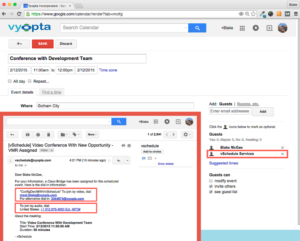We’re talking about the “fuel” that companies use to ignite video conferencing adoption in their organizations. Getting video conferencing to spread across the organization has not always been the easiest assignment for video administrators. Here are a few of the roadblocks that prohibit managers from driving adoption and a few best practices that will help you avoid them.
#1 Interoperability
Before you even begin fueling video adoption, we’ve learned that proper configuration and interoperability are critical for user experience. Complications are bound to arise when connecting to large-scale UC platforms through multiple firewalls and across networks. Because interoperability has been a huge issue, many video conferencing vendors have started adding UC support and integrations that focus on a consistent user experience. See article on Acano & Microsoft Lync (Skype For Business) Integration
Your hardware endpoints and bridging must be compatible with the many video technologies available today. Interoperability is a top priority in our analytics platform that is able to pull and combine data from complex video environments. A simple best practice for driving adoption: make sure that before and during the deployment, your systems cooperate with the big players and the up and coming video technologies.
#2 Why the heck do I need to use video?
Video isn’t pervasive in enterprise communication today because some people just don’t get why they need it. It’s often up to the IT team and department heads to encourage and incentivize video usage within the organization, but IT departments will be the first ones to tell you that they are bad at marketing their new services. Often times, a cool new collaboration technology runs a pilot in the IT organization and then dies briefly after even though it has great adoption among the team. For those who doubt video will improve anything, here are a few of the reasons I prefer video over most forms of communication:
Video helps you build a relationship: If you’ve ever had a boss or co-worker work remotely, you’d know it’s pretty hard to have any kind of relationship over phone and email alone.
If you’ve ever had an angry client or customer send you a nasty email or get a bit heated with you on the phone, you know that it can be hard to get anything done. Hop on a video call and I guarantee that most issues can be resolved more quickly with the rich communication from a face-to-face conversation.
#3 Advocate Video
The first step in getting the doubters to even consider using video conferencing is being an advocate yourself. Use video conferencing every single day, whether you use web RTC, Lync (S4B), a personal endpoint or conference room, and share the experience.
The second step is making it fun. As Matt Stevenson, CTO from Videonor says “video is supposed to be fun”, and therefore gamification can be a great means of driving adoption. Videoconferencing even saved “Dungeons & Dragons” for one group of dedicated fans.
Monitor video usage at the participant level among teams and see who can rack up the most points (video minutes) in your organization. This is a fun way to get everyone using video more, even if it is internal only. You can also get fun with the prizes too.
#4 What is “good” video adoption?
Once again, “You can’t manage what you don’t measure” – at least not efficiently. Setting utilization and adoption goals for your organization has been a tough game historically. IT managers new to the video world have a hard time determining what metrics to measure to show that video is paying off for their company. Here are a couple of great metrics for adoption:
Total number of video meeting minutes and average meeting duration: Compare reports on total meeting minutes from month to month to give you an indication that your systems are being used.
Total participant minutes and average participant duration: Another indication that video is doing great things for your organizations is more participant minutes. Depending on your average meeting size 2-3 or 4-5 per meeting, this number should end up dwarfing the “total meeting minutes” metric – which is a good sign that video is spreading throughout your organization.
% of endpoint utilization & audio vs. video minutes: Compare audio and video meeting minutes for a given period of time to gain an understanding of how your company is using systems.
Once you have the customizable reporting and a means of slicing and dicing your video data, you can set baseline metrics for video adoption and make improvements moving forward.
#5 User Experience: Scheduling
Video conference scheduling is notoriously complex for users. One of the biggest issues with video scheduling is multiple steps that confuse participants and communication with email providers – Gmail, Outlook etc..
Scheduling a video conference should be as seamless as scheduling any meeting on your company Calendar. Participants should receive a simple invitation to join the bridge at that’s it. Check out vSchedule, a simple way to schedule Gmail video meeting for large organizations.
#6 User Experience: Poor Quality
Enjoyable, stable calls are something people will expect with video in 2015 and on. If your call is being plagued with jitter and packet loss the entire time, or fails altogether, it is “exponentially harder to get that user to come back” according to Matt Stevenson. Your users will try a few times, give up, eventually pick up the phone – and your adoption will drop. Fix call quality problems by managing call quality for systems across a wide and diverse network. This means jitter, packet loss, frame rate and more for systems across your industry.







